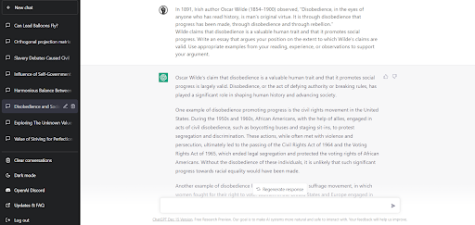The Technology behind Cryptocurrency, 2018’s Most Intriguing Industry
February 11, 2018
In the closing months of 2017, there was one emerging industry that dominated headlines: cryptocurrency. While the media attention surrounding cryptocurrency has exploded, many people are still unsure of what exactly Bitcoin is and how it works. Bitcoin is a type of cryptocurrency, which is a digital currency. In order to keep a record of cryptocurrency transactions, a string of code known as a blockchain was created. A blockchain is essentially a public ledger, or list of transactions. In 2008, an anonymous source with the pseudonym Satoshi Nakamoto developed both the blockchain and Bitcoin in a nine-page white paper. In recent years, blockchain has come to be seen by many analysts as the future of the world economy, with Harvard Business Review going so far as to say that blockchain “has the potential to create new foundations for our economic and social systems.” Essentially, blockchain can create new foundations that have the potential to develop new systems while preserving current business models.
One of the most appealing aspects of blockchain technology is the removal of a “middleman.” Transaction fees in the global economy impede the expansion of supply chains because manufacturers do not want to pay growing transaction fees as their market grows. With the decentralized model of blockchain technology, manufacturers would be able to efficiently expand their market due to the removal of a transaction fee “middleman.”
While there are some who have devoted significant amounts of time and energy to research blockchain, the general population is still unaware of the workings and benefits of blockchain. In order to help me explain blockchain, I interviewed two students, Aaron Diamond-Reivich and Andrew Ciatto, who attend the Wharton School of the University of Pennsylvania and have developed a serious interest in blockchain technology.
What benefits would blockchain bring to the world or United States economy? Why?
AC: The transparency of the blockchain and the lack of a middle man would encourage more commerce. The Economist estimates that banks charged $1.7 trillion in fees, or 2% of the entire world economy, in 2014. Instead of sending money through a few large banks, Blockchain allows users to send money through a massive network of personal computers. This drives down fees to nearly zero, creating trillions of dollars of additional value for the economy.
ADR: Blockchain has the potential to make certain markets more efficient, but the bigger gain from blockchain comes in underdeveloped or highly corrupt worlds. Billions of people in the world have no legal identity. Their government has no record that they exist. This causes major problems. Without a legal identity, it is difficult to get passports, loans, etc. Blockchain has the ability to help these under-documented communities have a system for proving who they are. There is a multitude of ways the blockchains can help the underdeveloped world live in a more equitable and advanced manner.
Are there specific industries in the global economy that would benefit more from blockchain than other industries? If so, which industries and why?
ADR: One big category of work that stands to gain from blockchains is independent contractors. Take an Uber drive for example. When you pay for an Uber ride, the driver only keeps 75% of the price of the ride. The rest of the money Uber takes for matching the driver to the passenger. In a decentralized model, one benevolent individual could create a market where drivers and passengers can match with each other. Because there is no decentralized company to take part of the profits, the driver will get to keep 100% of the profits. Of course, this reaches far beyond Uber drivers. A similar argument could be made for plumbers, contractors, mechanics, etc.
Are there any privacy concerns with the Bitcoin network?
ADR: Blockchains are anonymous. Instead of buying something using your name, you use a public key. The only way that this public key can be traced back to you is if you link your public key to your identity in an exchange. For example, if you buy 3 bitcoin on Coinbase and deposit into your public key, Coinbase now knows that you are the identity associated with that public key. However, for the most part, blockchains are completely anonymous.
AC: Everyone on the network has a private key (which is like an address) then they use the private key to create a public key where other users can send Bitcoin. The private key is used to mathematically derive the public key which is then transformed with a hash function to produce the address that other people can see. You then can receive cryptocurrency when others send it to your address.
The absence of the aforementioned middleman with blockchain is what generates the excitement for the future. Blockchain is not an elitist technology, but instead can be used to help the impoverished. In Africa, for example, it costs more than $30 billion to transfer money to the Sub-Saharan region due to an average of 12% in transaction fees. With blockchain, it becomes significantly cheaper to transfer money and easier to send money to Sub-Saharan Africa, which is one of the most impoverished regions in the entire world.
There are also many other cryptocurrencies that are similar to Bitcoin, such as Ethereum, MintChip, and Ripple; however, some cryptocurrencies have significant differences compared to Bitcoin. For example, MintChip is a cryptocurrency that was developed by the Royal Canadian Mint and is backed by the Canadian dollar while Bitcoin was neither developed by a government nor has a physical currency.
But while cryptocurrency has the potential for immense benefits in our society, there are still improvements that could be made to alleviate the skepticism surrounding Bitcoin, mainly its high volatility, and blockchain technology. Many are wary of the high price of Bitcoin partially due to the fact that Satoshi Nakamoto is believed to have just under one million Bitcoins, and him selling could cause a serious reduction in the price. However, there is currently no indication that Nakamoto has any intent to sell off large quantities of his Bitcoin. If 2017 was any indication, however, it appears that cryptocurrency is going to continue growing and reach a new plateau in the world economy in 2018.
Works Cited
(ICFAI), Prableen Bajpai CFA. “Blockchain.” Investopedia, 18 Sept. 2017, www.investopedia.com/terms/b/blockchain.asp.
Investopedia. “Cryptocurrency.” Investopedia, 1 Sept. 2017, www.investopedia.com/terms/c/cryptocurrency.asp.
Lakhani, Marco IansitiKarim R. “The Truth About Blockchain.” Harvard Business Review, 17 Feb. 2017, hbr.org/2017/01/the-truth-about-blockchain.
MinuteVideos, director. Blockchain-A Short Introduction. YouTube, 29 Apr. 2016, www.youtube.com/watch?v=WiRFuHXHBhk&t=3s.
Quora. “What Is Blockchain Used For Besides Bitcoin?” Forbes, Forbes Magazine, 17 Nov. 2017, www.forbes.com/sites/quora/2017/11/17/what-is-blockchain-used-for-besides-bitcoin/#15cacef9446e.
Staff, Investopedia. “The Future Of Cryptocurrency.” Investopedia, 3 Oct. 2013, www.investopedia.com/articles/forex/091013/future-cryptocurrency.asp.





















